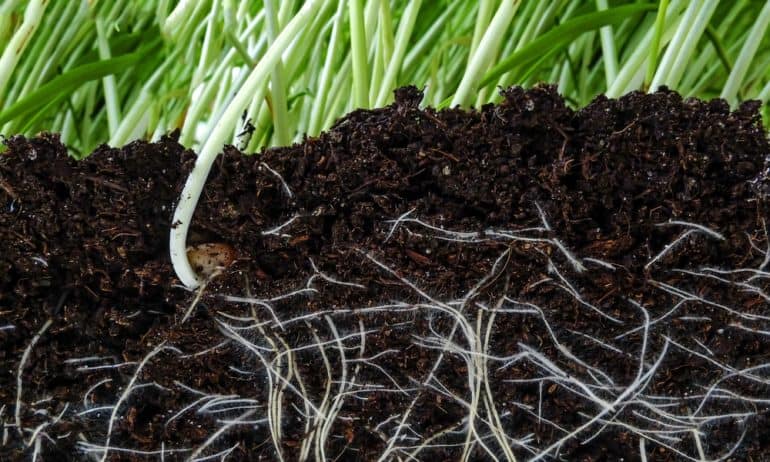The United States Botanic Garden (USBG) will feature a photo exhibit, Exposed: The Secret Life of Roots, in its East Gallery from February 21, 2015 through October 13, 2015. The exhibit is a collaboration of photographer Jim Richardson and agroecologist Dr. Jerry Glover, and will reveal the hidden root systems providing nutrients to our food crops.
As a soil specialist, Dr. Jerry Glover previously worked on developing perennial grain crops at The Land Institute in Kansas. Perennials control erosion and improve soil quality through more efficient water and nutrient use and more extensive root systems. Glover explains that through the improved roots systems associated with perennial plants, “croplands would be more like the natural grasslands that once dominated the Earth. Crops could be harvested year after year without being replanted, enrich rather than deplete the soil of key nutrients, and require little or no fertilizer or pesticides.” Despite being optimistic about the potential of perennial crops to provide ecosystem services, Glover cautions that the genetic work will take 10 to 20 years to bring perennial grains to widespread production.
Jim Richardson has photographed more than 30 stories for National Geographic, including food stories such as “Food Ark,” and special issues such as Farmers: Growing our Food. National features of Richardson’s passion for rural Kansas have appeared on CBS and in National Geographic.
The collaboration between Richardson and Glover will bring to life the support systems that supply our food crops with water and nutrients. By creating an impactful reminder of the ecological processes that we rely on for food security, the exhibit will prompt viewers to imagine root systems as a key component of both plant conservation and improved agricultural sustainability.
The exhibit will contribute to the mission of the USBG, which is dedicated to demonstrating the aesthetic, cultural, economic, therapeutic and ecological importance of plants to the well-being of humankind. The USBG’s sustainability efforts are fostering the exchange of ideas and information to further its goal of plant conservation.















